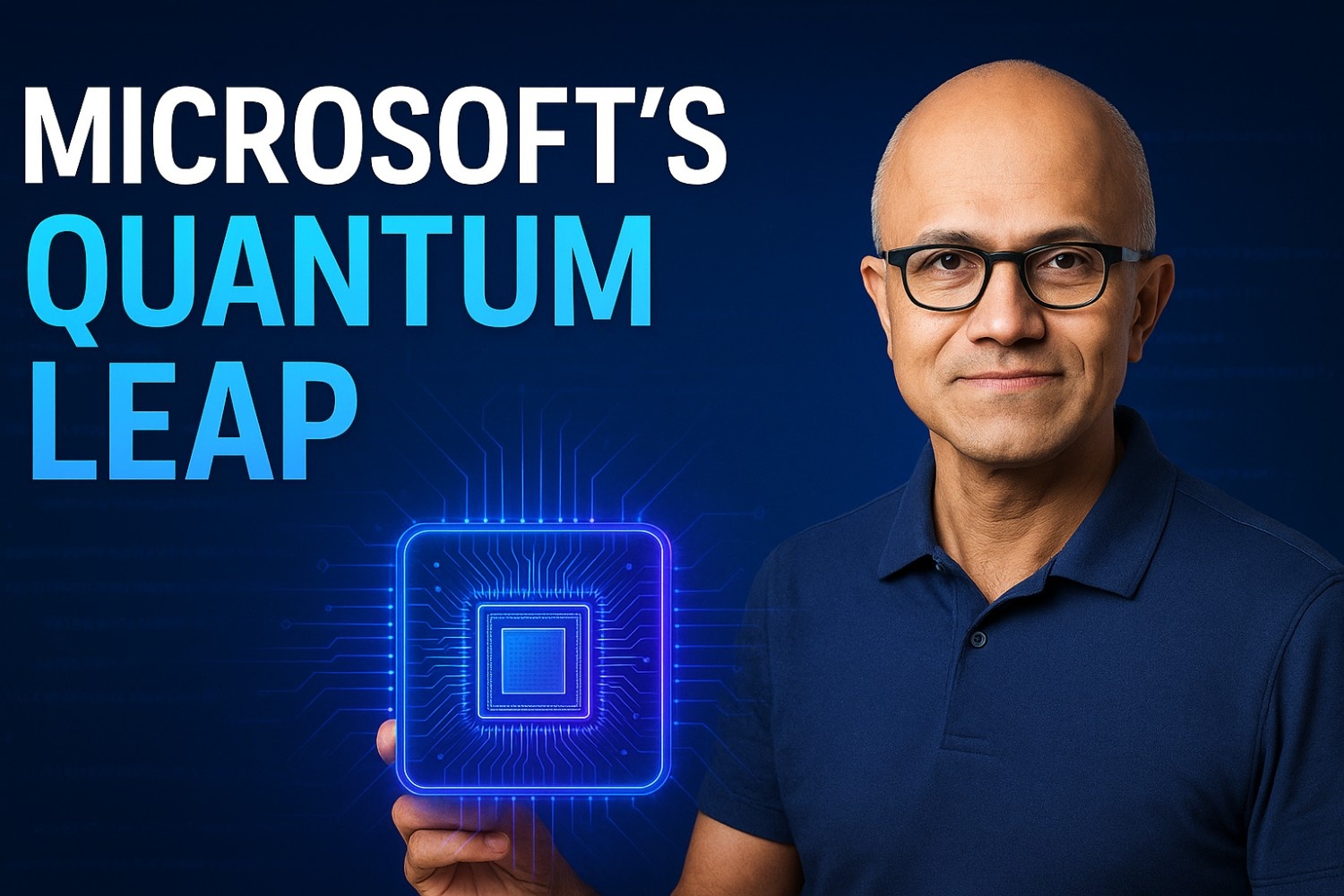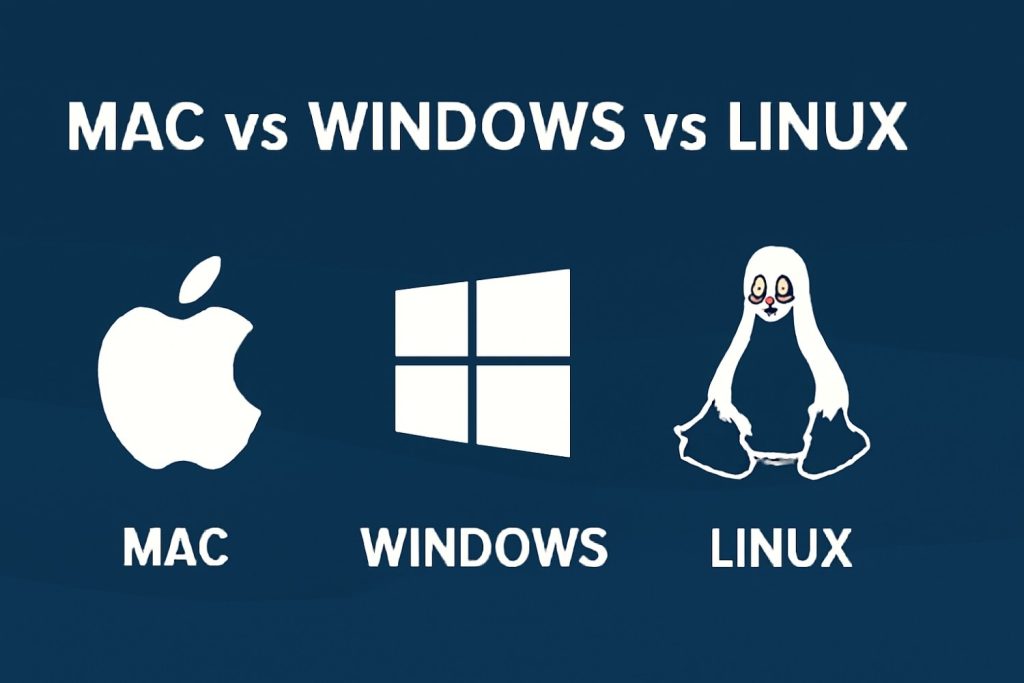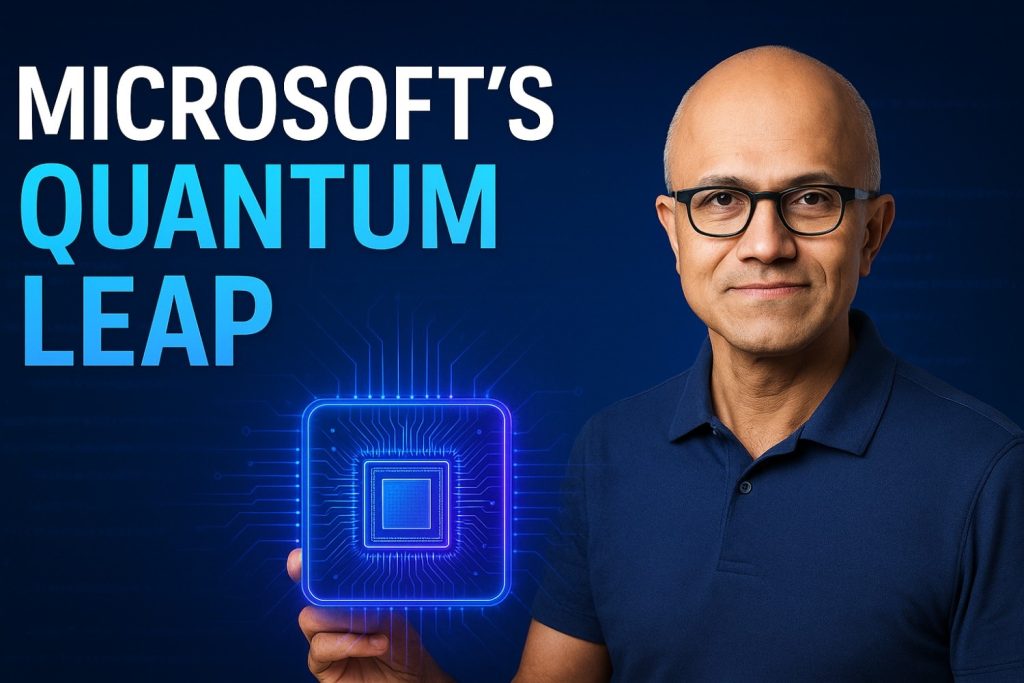In a surprising and potentially revolutionary announcement (February 2025), Microsoft has introduced a new quantum computing chip called Majorana One. This is not just another incremental update in the quantum computing race—it could represent an entirely new state of matter and a fundamental breakthrough in computing.
A New State of Matter?
Traditionally, we’ve known four states of matter: solid, liquid, gas, and plasma. But Microsoft claims their chip leverages a fifth state of matter, built on exotic particles known as Majorana fermions. If true, this could make the Majorana One chip as pivotal to quantum computing as the transistor was to classical computing.
What Makes the Majorana One Chip Special?
Unlike traditional quantum chips, which use fragile qubits easily disrupted by their environment, the Majorana One is built on topological quantum computing principles. This approach uses Majorana fermions, mysterious particles that are their own antiparticles—a concept theorized in 1937 and only observed experimentally in the last few years.
These particles exhibit a unique resilience to quantum decoherence, one of the biggest challenges in quantum computing. Decoherence causes qubits to lose their quantum properties, much like trying to coordinate a choir in a chaotic war zone. The Majorana fermions’ unique symmetry gives them a natural resistance to environmental noise, potentially enabling much more stable and scalable quantum computers.
How It Works
The chip relies on nanowires engineered at the atomic level, with Majorana zero modes positioned at each end. Computation occurs by measuring the parity (even or odd count) of electrons in the wire. The underlying structure is a new type of material called a topo-conductor, which acts as a hybrid between a semiconductor and a superconductor. These can theoretically be chained together to support millions of qubits on a single chip.
What’s the Catch?
Despite the excitement, it’s essential to stay grounded. The chip must operate at near absolute zero temperatures, and while Microsoft claims scalability, it has not yet demonstrated quantum computing at the million-qubit level. As of now, Google and IBM appear to be ahead in terms of deployed quantum systems, with Google’s recent “Willow” chip making significant strides in quantum error correction.
A Long-Term Bet
Microsoft’s approach is notably different. While others focus on refining traditional qubit systems, Microsoft has invested heavily in this topological method, playing a long game with potentially much greater payoff. If they succeed, it could mean quantum computers become practical within years rather than decades.
For developers and engineers, this could eventually mean rewriting core software and adapting algorithms to take advantage of quantum hardware capabilities. The potential applications range from drug discovery to AI simulation to possibly even running Windows updates in seconds—a dream for many.
Microsoft’s Majorana One chip could mark the beginning of a new quantum revolution. While there’s still a long way to go before real-world applications emerge, the science behind it is promising and genuinely exciting. If successful, this could pave the way for stable, scalable quantum computers and open up computational possibilities we’ve only dreamed of.
Stay tuned, because the quantum future might be closer than we think.







